A Halloween Special
With a history dating back some two thousand years it’s hardly surprising that London is widely considered one of the planet’s most haunted cities.
So with Halloween approaching I thought now would be a good time to take a look at the top five ghostly images snapped within the capital…
1. The Queen’s House Ghosts
Location: Queen’s House, Greenwich
Year of capture: 1966
This haunting image was taken by Reverend R.W Hardy, a retired Canadian who was visiting the Queen’s House with his wife.
Commissioned in 1616 by Anne of Denmark (wife of James I) Queen’s House was designed by pioneering architect Inigo Jones and stands beside the National Maritime Museum in Greenwich.
A major feature of Queen’s House are the Tulip Stairs; the elegance of which drew Mr and Mrs Hardy to the building.
When the photograph was taken, Reverend Hardy was simply interested in recording the architecture- no other figures were visible and whilst he framed the shot his wife checked to insure no passers-by were around to spoil the frame. The staircase was also roped off, complete with a ‘No Admittance’ sign.
Yet when Mr and Mrs Hardy had their photos developed back in Canada, the Tulip Stairs revealed a pair of mysterious, robed figures clutching the railings.
Photographic experts have examined the original negative and found no signs of tampering.
To add to the mystery, another apparent sighting was noted more recently in May 2002 by gallery assistant Tony Anderson who, along with two other colleagues, encountered something most unusual one morning:
“Something caught my eye… I thought at first it was the girl who did the talks at weekends, then realised the woman just glided across the balcony and went through the wall, west side… the lady was dressed in a white-grey colour, old-fashioned, something like a crinoline-type dress“.
2. St Botolph’s Church Ghost
Location: St Botolph’s Without Aldgate Church, Aldgate High Street
Year of capture: 1982
Hailing from 7th century East Anglia, Botwulf of Thorney– more commonly known as Saint Botolph– is the patron saint of travellers which is why, during the medieval era, four London churches were dedicated to his name, each built beside one of the city’s gates so that those embarking on a journey could pop in and pray for a safe trip.
Although one of St Botolph’s churches (which stood at Billingsgate) was destroyed in the Great Fire, the other three remain at Aldersgate, Bishopsgate and Aldgate.
St Botolph’s, Aldgate (officially named St Botolph’s Without Aldgate) has been rebuilt several times; the current building dates back to 1744 and was designed by George Dance the Elder.
A stone’s throw from Whitechapel, St Botolph’s Without Aldgate was known as the ‘Church of Prostitutes’ during the Victorian era as the women of the night used to stay close to St Botolph’s walls in order to avoid police harassment.
The church was badly damaged both in the Blitz and by a fire in 1965- of which the cause remains unknown…
The famous picture of a ghostly figure in period dress peering down from the church loft was taken by Chris Brackley in 1982.
At the time, Chris was aware of three other people in the church- none of whom were in the upper level. Experts examined negatives and concluded that no tampering or double exposure were evident.
3. ‘Skeletor’
Location: Hampton Court Palace
Year of capture: 2003
Nicknamed ‘Skeletor’ thanks to his resemblance to the villain from 1980s cartoon, ‘He-Man and the Masters of the Universe‘, this spook was captured on CCTV at Hampton Court, the huge palace on London’s south-western outskirts which was originally built for Cardinal Thomas Wolsey and later snapped up by Henry VIII.
During late 2003, an alarm was activated indicating that a set of fire-doors had been opened- yet staff found the exit firmly closed and nobody in the vicinity.
But when examined the CCTV footage suggested a very different story, showing a bizarre figure quickly flinging and slamming the doors. Other cameras focused on the area behind the doors showed the building to be empty.
The doors opened by themselves again the next day, although no figure was present this time. Around the same time, a visitor to Hampton Court noted in the guest book that she’d glimpsed a mysterious figure…

The original ‘Skeletor’ from the 1980s cartoon, ‘He-Man’ after whom the Hampton Court ghost was named
Dr Richard Wiseman, an expert in debunking ghostly photographs is stumped by the footage “it could be the best ghost sighting ever…I haven’t seen anything that would match that at all.”
The Skeletor figure made headlines around the world, and it is reported that some staff at Hampton Court are now reluctant to work within the supposedly haunted area.
Please click below to view the CCTV footage:
4. The Bakerloo Electric Chair
Location: The Bakerloo Line, deep beneath Marylebone
Year of capture: 1983
This bizarre image was clicked inside the carriage of a Bakerloo line train by Watford resident, Karen Collett whilst on a day trip to London with her family.
The sinister figure in the window behind Karen’s nephew is a disconcerting mix of the known and the unexplainable.
It is generally agreed that the ghostly figure depicts the wax effigy of Bruno Hauptmann; a convict sent to the electric chair in 1936 for his part in the kidnap and murder of Charles Lindbergh’s infant son.
When Karen took her photograph in the early 1980s, Hauptmann’s wax figure was on display in Madame Tussauds Chamber of Horrors section- a venue which the Bakerloo line passes deep beneath.
What is unusual is this: when the photo was taken, Karen and her family had not been to Madame Tussauds, let alone take any pictures of figures strapped in chairs. Nor does Hauptmann’s waxwork have electric blue flashes zapping out of his wrists.
No evidence of tampering has been found with this image and the only explanation offered so far is that the electrifying image is a poster… although the photo was taken whilst the train was speeding through a tunnel (where, of course no posters are displayed) and neither Madame Tussauds or London Underground have any record of using advertising containing such imagery.
5. The Enfield Poltergeist
Location: Green Street, Enfield
Year of capture: 1978
Caught by a remote camera during the early hours, the image above is one of many documenting the case of the ‘Enfield Poltergeist‘ which occurred in suburban North London during the late 1970s.
The story of the Enfield Poltergeist is deeply unsettling… either the result of true psychic malice or two supremely manipulative teenagers. A full article- written as last year’s Halloween special can be read here.



















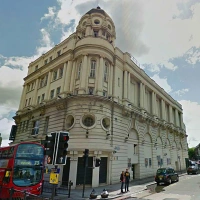
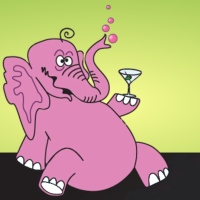
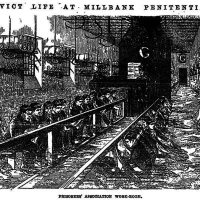
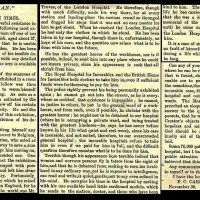


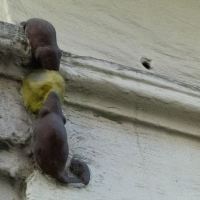
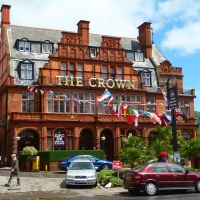

Great stuff… I recently wrote a post of the Grenadier Pub where purportedly the BBC captured an image of the ghost in the pubs window… but I wasn’t able to locate it. Have you seen it?
Thanks 🙂 Funnily enough, I read about the BBC’s Grenadier footage whilst researching this article… but sadly I’ve also drawn a blank. The recording has to be out there somewhere though…
Fascinating…miles better than the usual Hallowe’en stuff on the net!
This is one time when I will use the word “awesome” and mean it. Great stories… well told… fascinating photos and movies. I don’t know which is scarier… but I vote for the Queen’s House Ghosts! Thanks for sharing this! Now I’m ready for Halloween!
Thank you so much guys 🙂 Have a great Halloween.
Spooky stuff & a great read. London is full of fascinating history and tales which just get better, Love the cabbie’s tales 😉
Thanks, Jay 🙂
Great compilation and a truly spooky departure from the usual Halloween tawdriness. I used to read about these incidents in books growing up, and have always been intrigued by the paranormal.
Two months ago I visited Edinburgh’s underground and other than the guide trying to scare us in a somewhat silly way, I was fascinated by the sub-histories of the city. British history is endlessly interesting and varied.
Thank you so much for those kind words; much appreciated.
Great article! I’m confused as to why anyone would think the Hampton Court figure is a skeleton, though. What I see is a man wearing a long robe with white trim down the front, which is closed at the top and opens about halfway down. This may give the impression of skeletal legs, but it’s just the front of a robe. You can see the long sleeves, also with light trim, and some sort of hood or collar. His foot can be seen coming out from underneath the garment. The fabric is otherwise dark, so it sort of blends into the grainy background of the video. And he seems to have longish dark hair too.
If this is a ghost, it’s someone dressed in a long fancy or ceremonial period robe. If not, it might be someone attired for a lodge ceremony or re-enactment or the like. But there is nothing skeletal about him – that’s an optical illusion.
As far as the Bruno Hauptmann photo goes, my vote is for poster – mostly because the electric sparks look graphical (i.e. drawn). A real execution probably wouldn’t produce such sparks, and they wouldn’t look like that if it did. So the only reason for adding them would seem to be a visual suggestion that this is an electric chair, placed there to help people interpret the image quickly. It definitely looks like it’s outside the car, and there seems to be a shadow cast across it.
If this were a real ghost image, why not just produce an image of the person himself, or even a photograph? Why a wax figure? It doesn’t make much logical sense, but an advertising poster accidentally snapped in passing does. The Underground is plastered in advertising, like most subways are.
As for Madame Tussaud’s not having a record of the poster, that doesn’t surprise me either. When I visited the museum in New York, they had an unlabeled female figure on display in the sports section. I phoned them to find out who it was, and they had no idea. I had to track the person down myself, and tell THEM who it was. And she was still on display! So clearly their record keeping isn’t the model of perfection. 😛
It’s a cool image, though, in any case.
Many thanks for your comments, Jennifer 🙂
[…] discover the Tulip Stairs. As I was researching the stairs I discovered it was also the location of one of the most famous ghost pictures ever taken […]